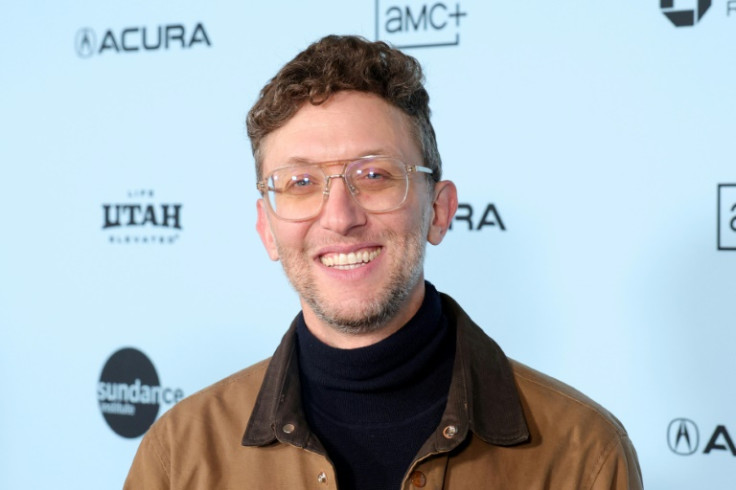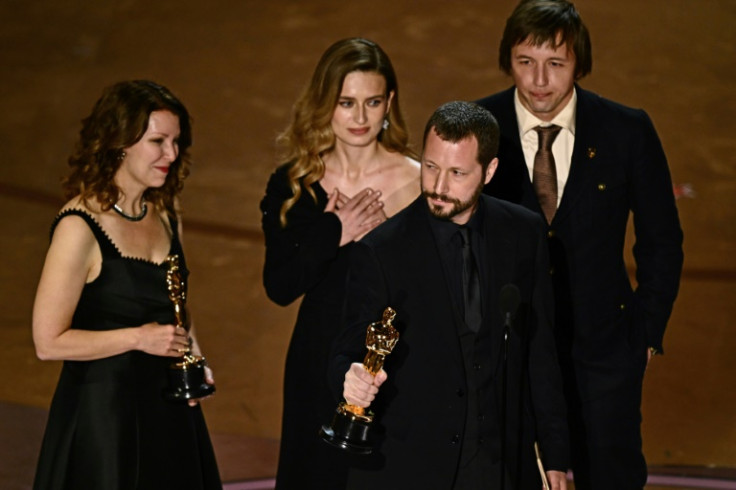
From Ukraine Trenches To Russia Schools, Sundance Docs Show Toll Of War
"What if this war is until the end of our lives?" "It's an explanation of how soldiers in a war zone live," he told AFP. Besides visceral depictions of fighting, "2000 Meters to Andriivka" displays the dark humor, quotidian concerns and dogged determination o…
"What if this war is until the end of our lives?" asks the shell-shocked Ukrainian soldier, who has just "liberated" a village from Russian forces.
There is little to celebrate in this moment, captured in "2000 Meters to Andriivka" -- one of two new documentaries at the Sundance film festival that chronicle the appalling impact of the conflict, from frontline trenches to faraway Russian schools.
The newly reclaimed village of Andriivka is a single street of bullet-pocked rubble. It will soon return to Russian hands.
And, as devastating footage from soldier head-cams makes graphically clear, every meter (yard) reclaimed has cost horrific injury and death.
In this follow-up to his Oscar-winning "20 Days in Mariupol," director Mstyslav Chernov shifts his focus from civilians to soldiers.
Chernov and his team embedded with Ukraine's counter-offensive in September 2023, crawling through a thin strip of forest, surrounded by deadly mine-riddled fields, toward Andriivka.
It plays like an all-too-real action movie, and Chernov admitted he was "worried people wouldn't see past the 'bang bang.'"
"It's an explanation of how soldiers in a war zone live," he told AFP.
Besides visceral depictions of fighting, "2000 Meters to Andriivka" displays the dark humor, quotidian concerns and dogged determination of the 3rd Assault Brigade.
"It was so nice in here," jokes one soldier, as the team leaves a damp, spider-infested foxhole, and heads once more into a hail of bullets.
"Best job in the world," quips another, as his comrade frets about not having fixed the toilet back home for his wife, while deadly shells and drones fly overhead.
Many of the soldiers shown in the film are now dead, the narrator explains.
Its world premiere at the Utah-based indie movie festival drew a tearful standing ovation.
Elsewhere at Sundance, another film captures the insidious impact of the same conflict on young Russian children, 1,200 miles (2,000 kilometers) to the east.
Following the invasion of Ukraine, schools across Russia received a mandatory new "patriotic" curriculum.
Children are taught that Ukraine is full of "neo-Nazis," the history of various Russian machine guns -- and that the West has been left crippled and starving by Russian sanctions.
"Mr Nobody Against Putin," which premiered Saturday, features rare footage, smuggled out by a dissident teacher, that documents this "militarization" of Russian schools.
Pavel "Pasha" Talankin -- the school's "event coordinator" -- was instructed to film these propaganda lessons, and upload footage as proof they were being implemented to the Russian government.
But he secretly collaborated with Denmark-based director David Borenstein to show the world what is happening.
Viewers see children participating in grenade-throwing contests -- with medals for the winners -- and recounting famous Russian military victories from scripted answers on scraps of paper hidden under their desks.
"What you're seeing in the film basically is what Putin, the regime, is telling the children in Russia on a daily basis," Borenstein told AFP.
"And it's not just about Ukraine. It's about perpetual war, an ideology of empire. It's an ideology of militarization that is meant to go beyond just this war."
The project has only just come to the Kremlin's attention, and filmmakers are already receiving "attacks" from nationalistic bloggers, said Borenstein.
Meanwhile, Chernov fears the West's attention to the conflict is slipping, almost three years after Russia's full-scale invasion.
"The longer it goes on, the less the world will care about it," he narrates in his film.
Russian President Vladimir Putin recently said he is ready for talks with his US counterpart Donald Trump -- prompting fears Ukraine could be sidelined and carved up.
Still, co-producer Alex Babenko said every Sundance screening has sold out, and he hopes the attention from Chernov's previous Oscar win can help reignite focus on the huge sacrifices being made by his countrymen.
"The Oscar for sure helps to get more people to read about this movie," said Babenko.
"I think that people are ready to come and hear these stories."


